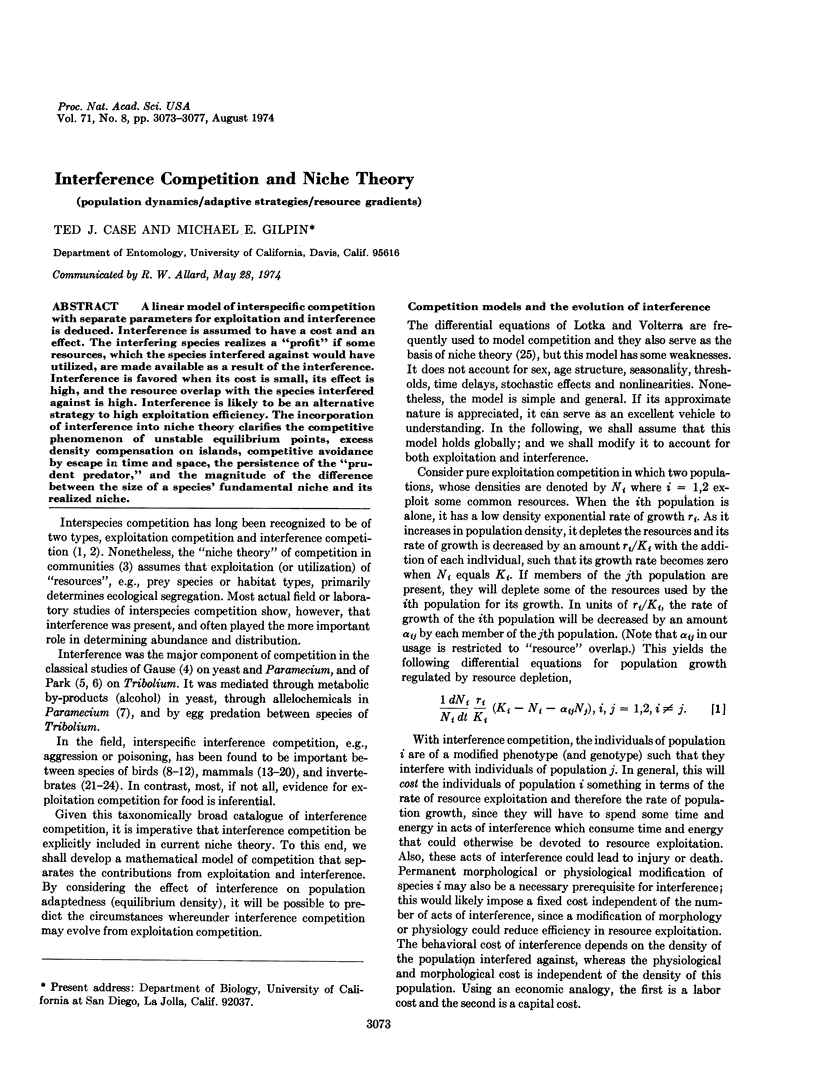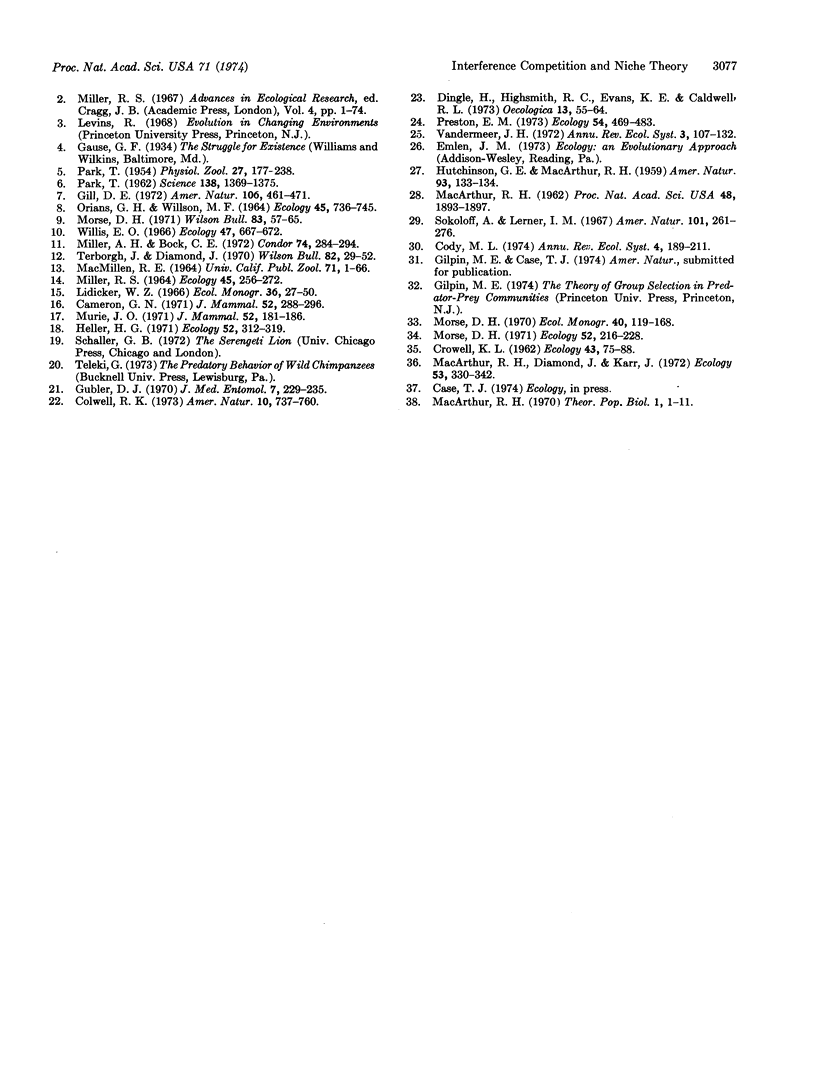Abstract
A linear model of interspecific competition with separate parameters for exploitation and interference is deduced. Interference is assumed to have a cost and an effect. The interfering species realizes a “profit” if some resources, which the species interfered against would have utilized, are made available as a result of the interference. Interference is favored when its cost is small, its effect is high, and the resource overlap with the species interfered against is high. Interference is likely to be an alternative strategy to high exploitation efficiency. The incorporation of interference into niche theory clarifies the competitive phenomenon of unstable equilibrium points, excess density compensation on islands, competitive avoidance by escape in time and space, the persistence of the “prudent predator,” and the magnitude of the difference between the size of a species' fundamental niche and its realized niche.
Keywords: population dynamics, adaptive strategies, resource gradients
Full text
PDF




Images in this article
Selected References
These references are in PubMed. This may not be the complete list of references from this article.
- Cameron G. N. Niche overlap and competition in woodrats. J Mammal. 1971 May;52(2):288–296. [PubMed] [Google Scholar]
- Gubler D. J. Competitive displacement of Aedes (Stegomyia) Polynesiensis Marks by Aedes (Stegomyia) albopictus Skuse in laboratory populations. J Med Entomol. 1970 Apr;7(2):229–235. doi: 10.1093/jmedent/7.2.229. [DOI] [PubMed] [Google Scholar]
- MacArthur R. Species packing and competitive equilibrium for many species. Theor Popul Biol. 1970 May;1(1):1–11. doi: 10.1016/0040-5809(70)90039-0. [DOI] [PubMed] [Google Scholar]
- Macarthur R. H. SOME GENERALIZED THEOREMS OF NATURAL SELECTION. Proc Natl Acad Sci U S A. 1962 Nov;48(11):1893–1897. doi: 10.1073/pnas.48.11.1893. [DOI] [PMC free article] [PubMed] [Google Scholar]
- Murie J. O. Behavioral relationships between two sympatric voles (Microtus): relevance to habitat segregation. J Mammal. 1971 Feb;52(1):181–186. [PubMed] [Google Scholar]
- Park T. Beetles, Competition, and Populations: An intricate ecological phenomenon is brought into the laboratory and studied as an experimental model. Science. 1962 Dec 28;138(3548):1369–1375. doi: 10.1126/science.138.3548.1369. [DOI] [PubMed] [Google Scholar]



